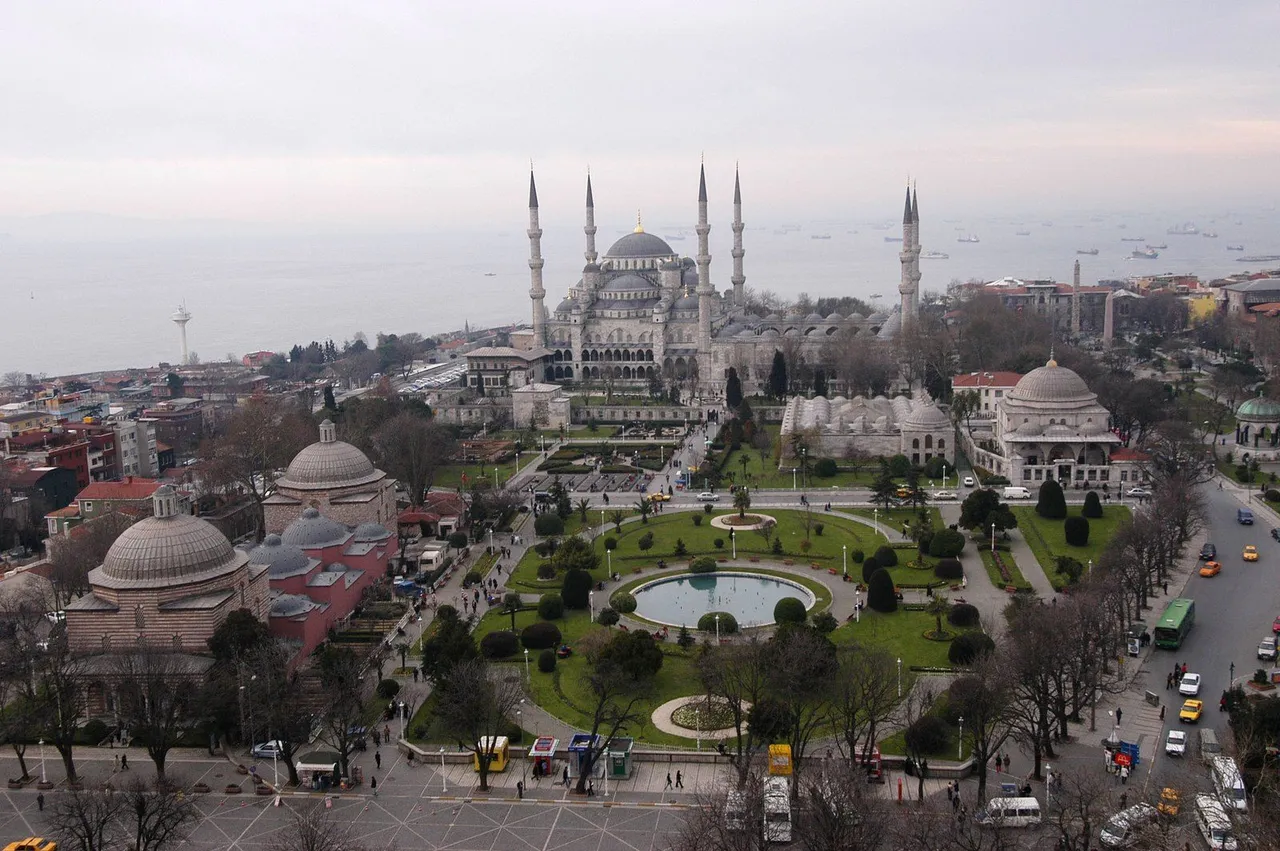
This mosque, constructed opposite Hagia Sophia, so to say, is competing with its beauty and magnificence. It has been constructed by an architect named Sedefkar Mehmet Aga with the command of Sultan Ahmet I. Construction of the mosque and kulliyah started in 1609. Sultan Ahmet I, his beloved master Aziz Mahmud Hudayi, Shaykh al-Islam Mehmet Effendi, Sadrazam (Grand Vizier) Davud Paşa and some great statesmen themselves physically worked in the construction of the mosque.
The mosque was opened to worship in 1617, while its kulliyah was not completed until the year 1619.
Kulliyah of Sultanahmet is one of the biggest kulliyahs of Istanbul. It consists of a mosque, madrasas, Sultan pavilion (qasr), bazaar, shopping centers, bathhouse, fountain, tomb, hospital, primary school, soup kitchen and rooms for rent, however unfortunately some of these sections did not survive to this day.
Ground clearance of the dome, which is 23.5m in diameter, is 43 meters. Four elephant legs - each one of them is 5m in diameter - hold this huge dome standing. The main dome is also supported by four semi-domes. Two hundred and sixty windows decorated with colored glasses provide a unique interior lightening to the mosque.
Sultanahmet Mosque has been called “Blue Mosque” by foreigners because of its more than twenty thousand tiles used for interior decoration of the mosque and the shades of blue used in the patterns on these tiles.
The greatest characteristic of Sultanahmet Mosque is that it has six minarets. It preserved to be the only mosque with six minarets in Turkey until a replica of it (Sabancı Central Mosque) was constructed in Adana.
Sultan Ahmet I added a 7th minaret to Magnificent Ka’bah, which had been the only mosque with six minarets until that time, in order to make it superior to the Sultanahmet mosque.
Nacre ornamented gate and window lids, marble engravings on the pulpit and sanctuary, hand-carved ornamentations of the mosque increase the elegance and beauty of the mosque.
Another characteristic of Sultanahmet Mosque is to have a Sultan Pavilion. Sultan Ahmet I was one of the most pious Ottoman sultans. Before and after the prayers he would retire in Sultan Pavilion, which was constructed next to the mosque in the outer court of the kulliyah. It is reported that leaving Topkapı Palace he would go into seclusion there for 10 days at the end of the month of Ramadan.
Sultan Ahmet I, his wife Kosem Sultan, his sons, Sultan Osman II and Sultan Murat IV and his some grandsons are buried in a tomb constructed within the kulliyah. Around the tomb, there is a madrasa that is currently used as the Prime Ministry Archive Storage. Hospital and soup kitchen of the kulliyah currently serve as Sultanahmet Technical High School.
H. Kırkıl